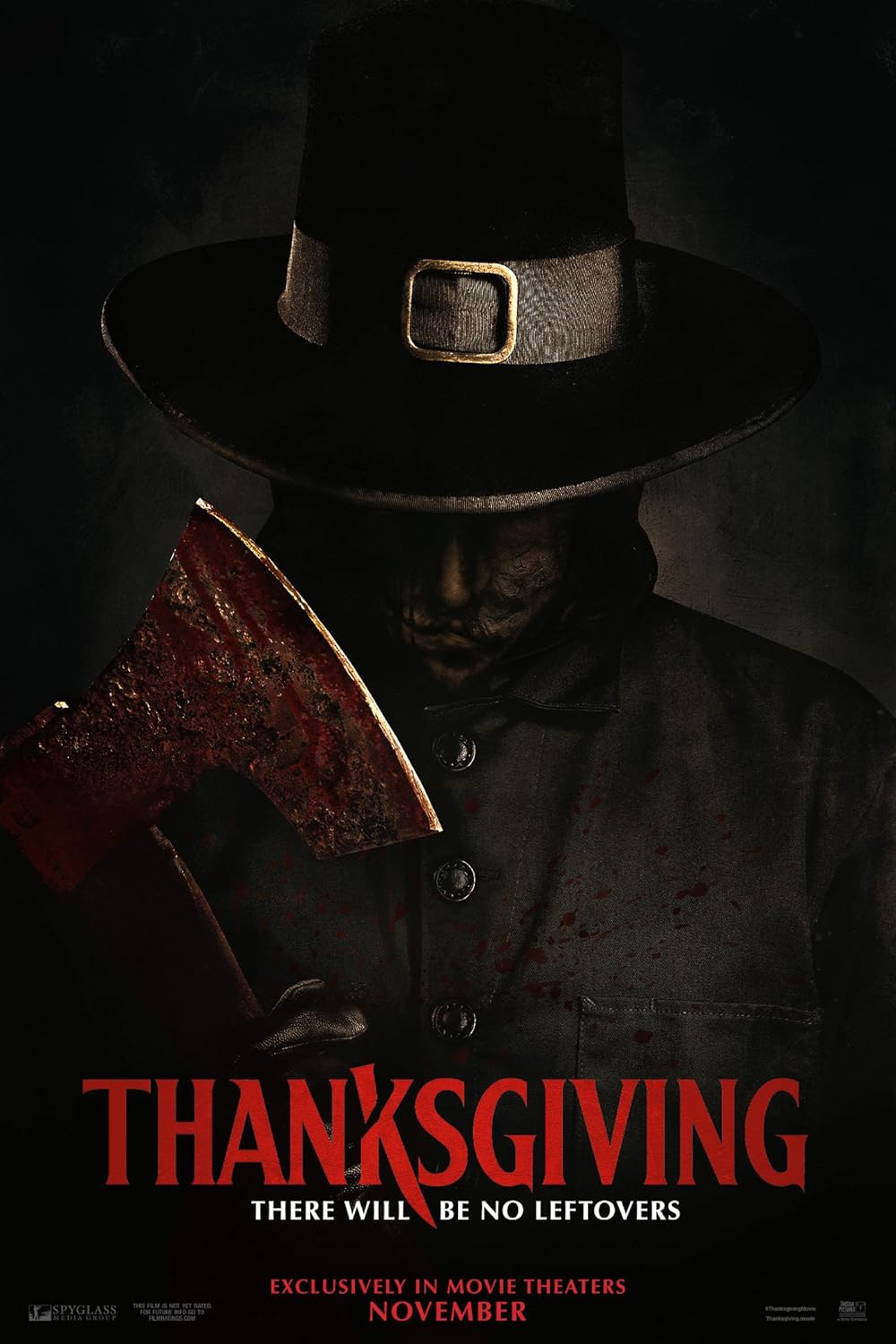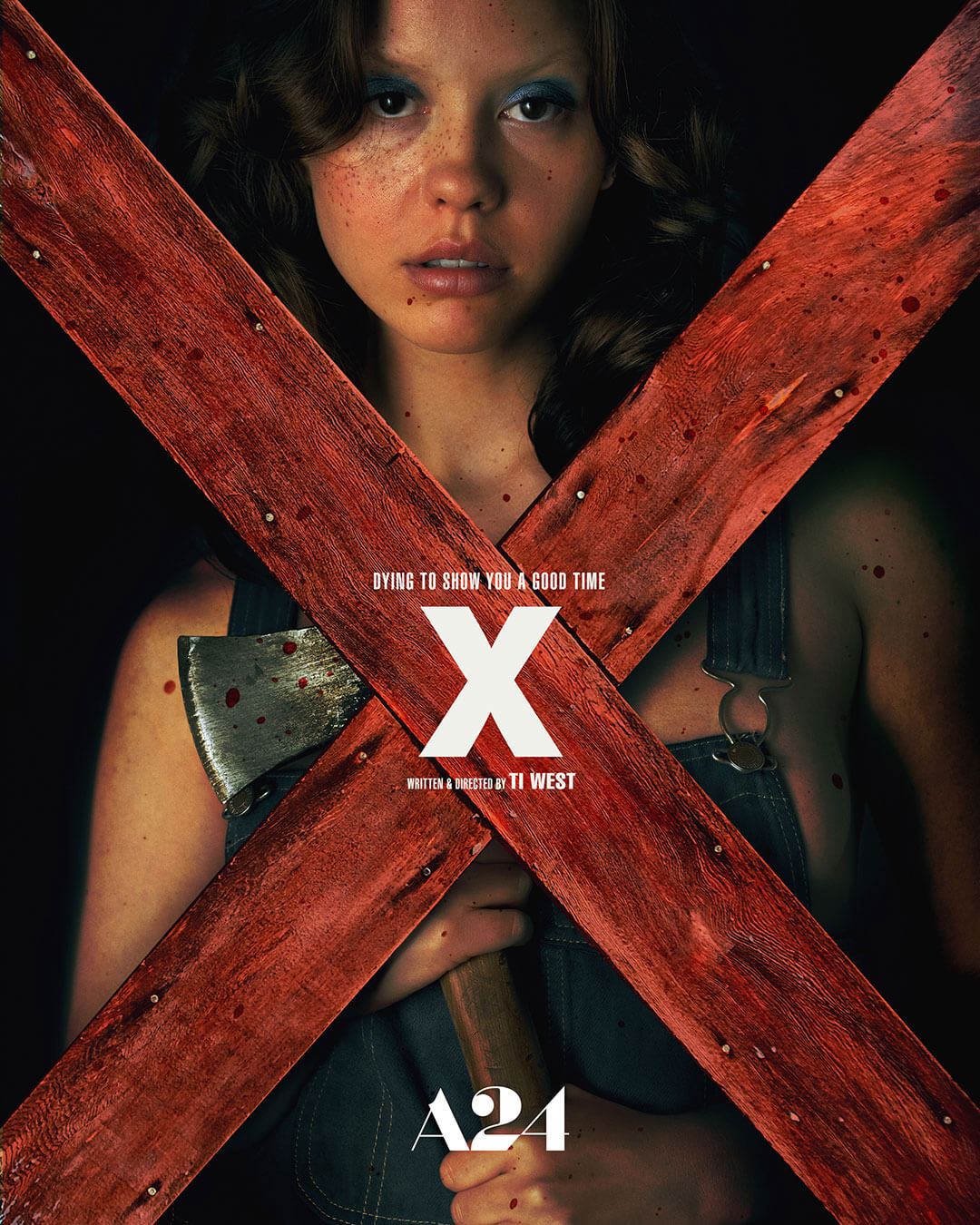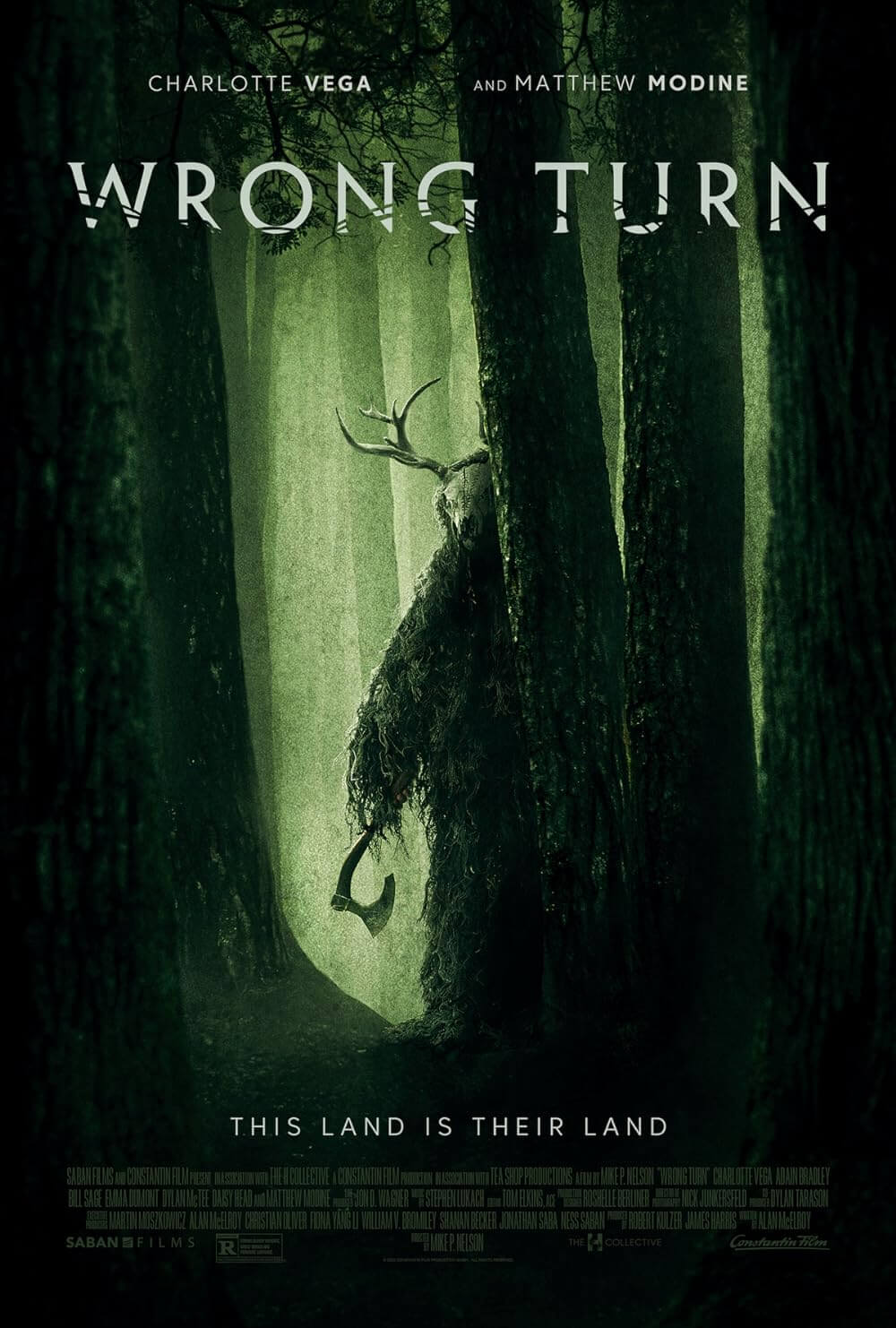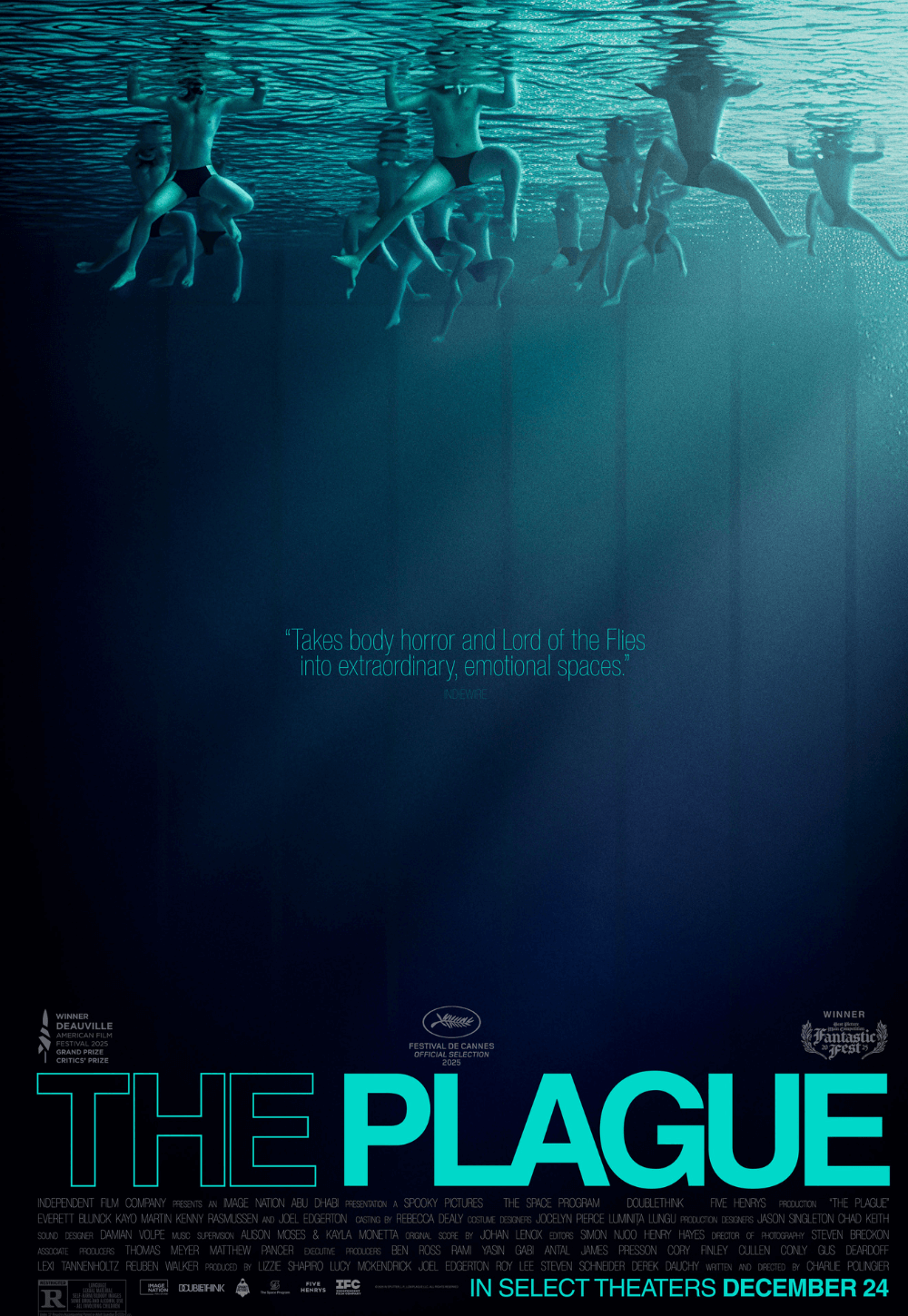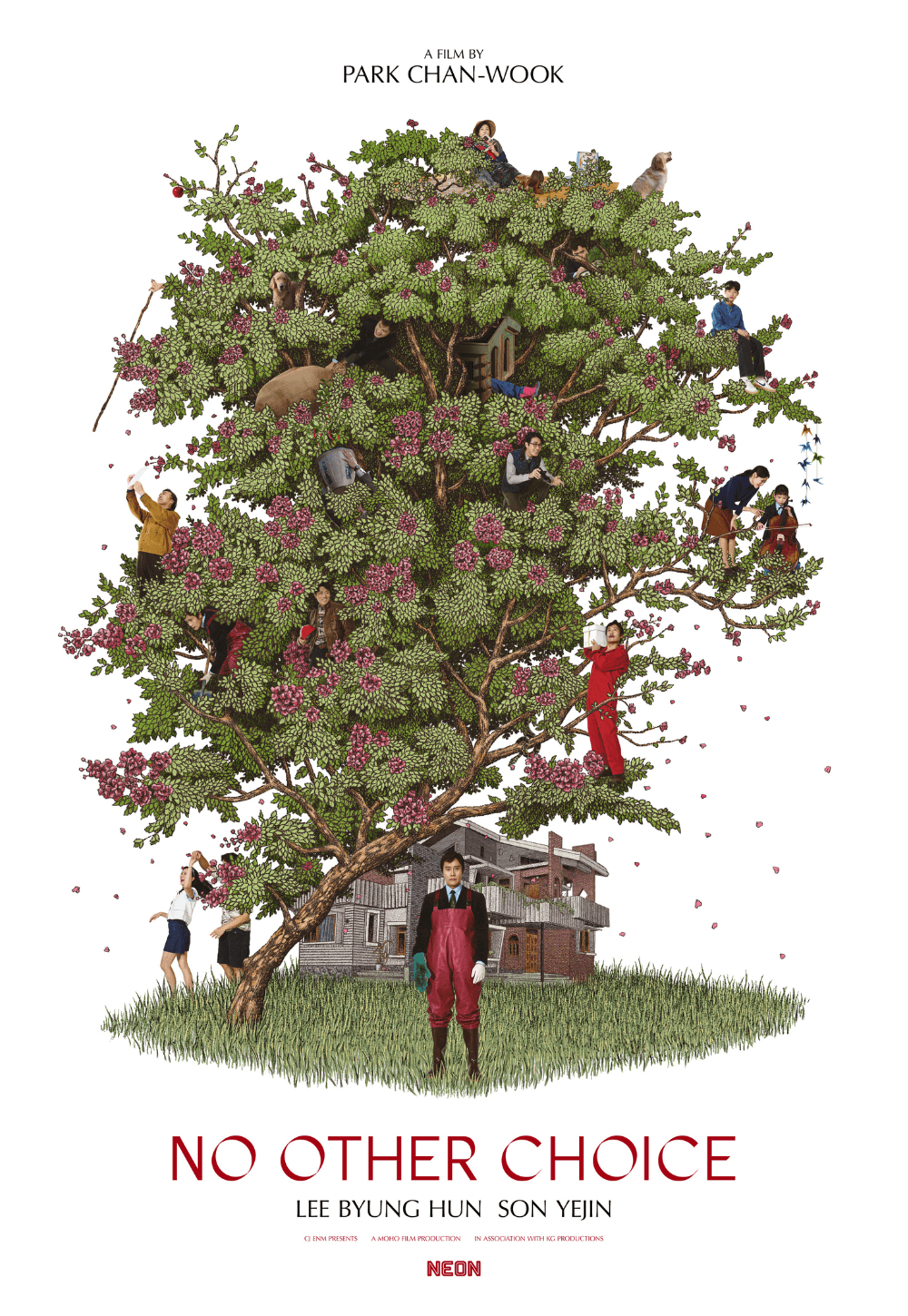Reader's Choice
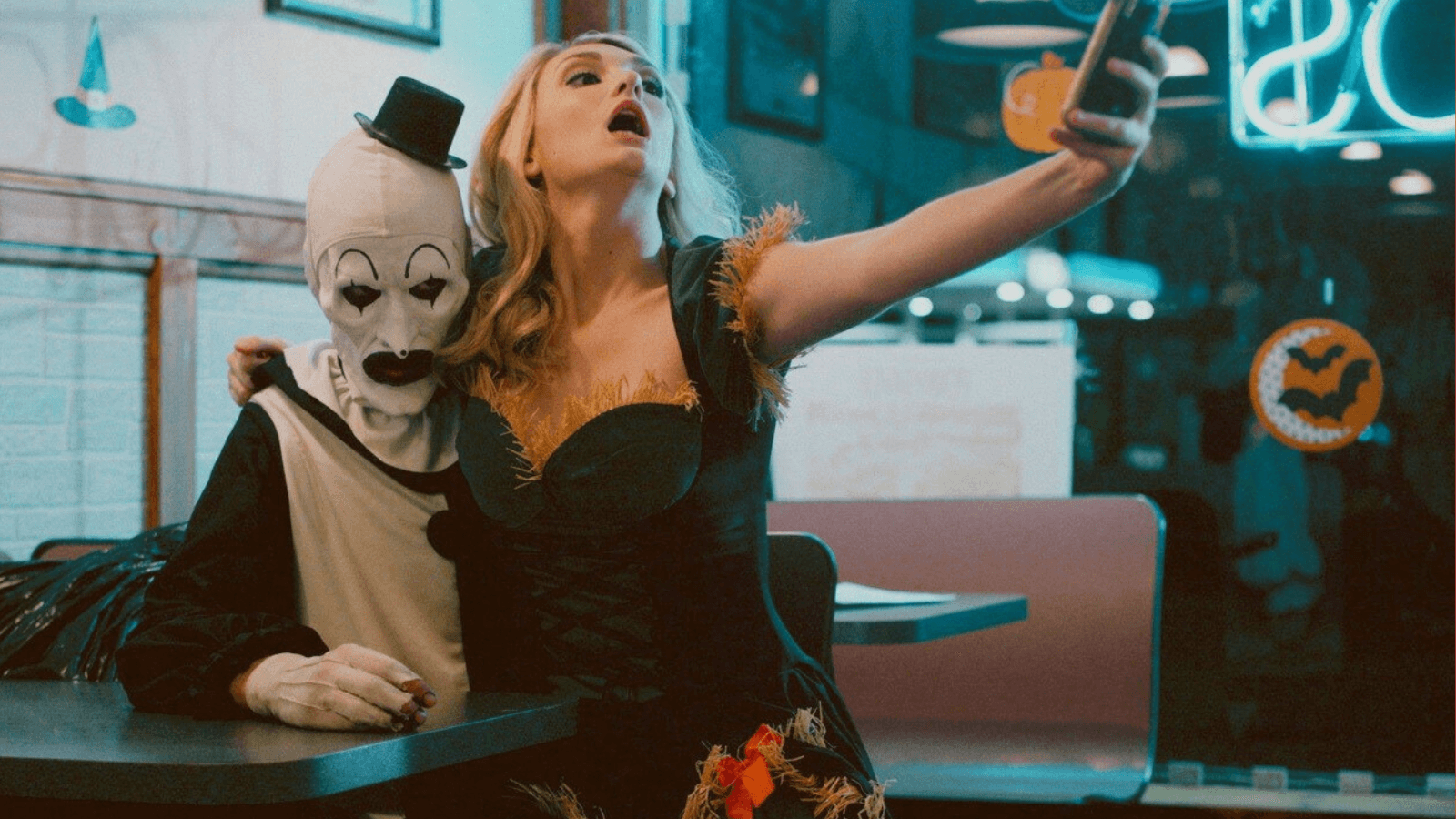
Terrifier
By Brian Eggert |
Art the Clown, the sadistic killer at the center of writer-director Damien Leone’s Terrifier, is a consummate performer. Dressed in black and white Victorian clown garb, he wears oversized shoes and a tiny top hat kept in place with an elastic strap. His jester routine consists of silent pantomime, at times resembling a demented Charlie Chaplin crossed with Conrad Veidt from The Man Who Laughs (1928). Like Chaplin’s Little Tramp, Art is a rambunctious instigator, playing prankish jokes on his victims. Of course, Chaplin’s character brought only joy, laughter, and tenderness, whereas Art performs chilling and gory exploits for his own amusement, often using the rusty tools he carries in an oversized garbage bag. But he may as well be a silent film character. When he unnerves or harms one of his victims, he often breaks into a mute, performative laugh. Art’s unbroken silence, even while reeling in pain, is part of what makes him so unrelentingly scary. He never pauses his mime bit to speak or cry out. The closest Art comes to losing control is when someone gets the upper hand, at which point his torturous games end, he gets a foul look in his eyes, and he resolves to end things with a gun. However, the question I kept asking myself during Terrifer is this: Who is Art the Clown performing for?
The answer is multifaceted. In one sense, Art performs for a diegetic audience that consists of his victims. He treats them as though they’re participating in a comedic repertoire, often with revealing ta-da moments and showstopping imagery of his latest mutilated casualty, as though he expects his victims to react in the same manner he does: with laughs and knee-slaps in expressive, nonverbal gestures that prove disturbing. In that way, he also performs for his own entertainment value. After all, Art is usually the only person laughing at his nightmarish behavior or in on his murderous joke. But there’s a non-diegetic audience, too. Art the Clown and, by extension, Leone, seek to entertain us, the viewers, with a procession of increasingly awful kills, rendered with convincing practical effects that seldom test credibility. The grotesque movie stages horrifying situations steeped in irony and viscera, pushing the audience’s limits and capacity to laugh at just how over-the-top horror can get.
To be sure, Terrifier requires a special kind of viewer. Leone draws a line in the sand between the casual horror movie fan and die-hard gorehounds who want to go their limits, in the same manner as Sam Raimi’s Evil Dead 2 (1987) or Peter Jackson’s Dead Alive (1992, AKA Brain Dead). And like those examples, Leone’s movie relied on its small but devoted base of viewers to help the microbudget project develop a following. Made for the staggeringly low sum of around $50,000, the movie could be a case study in cult viewership and success. After bowing the movie at the Telluride Horror Show Film Festival and other festivals, Terrifier had a small theatrical release in 2018, but the movie gained traction on Netflix and other rental markets. It took several years to establish a following, eventually leading to Leone’s 2022 and 2024 sequels. But Leone’s movie has a history that goes beyond this feature debut; he has been rethinking and refining the concept since 2008.
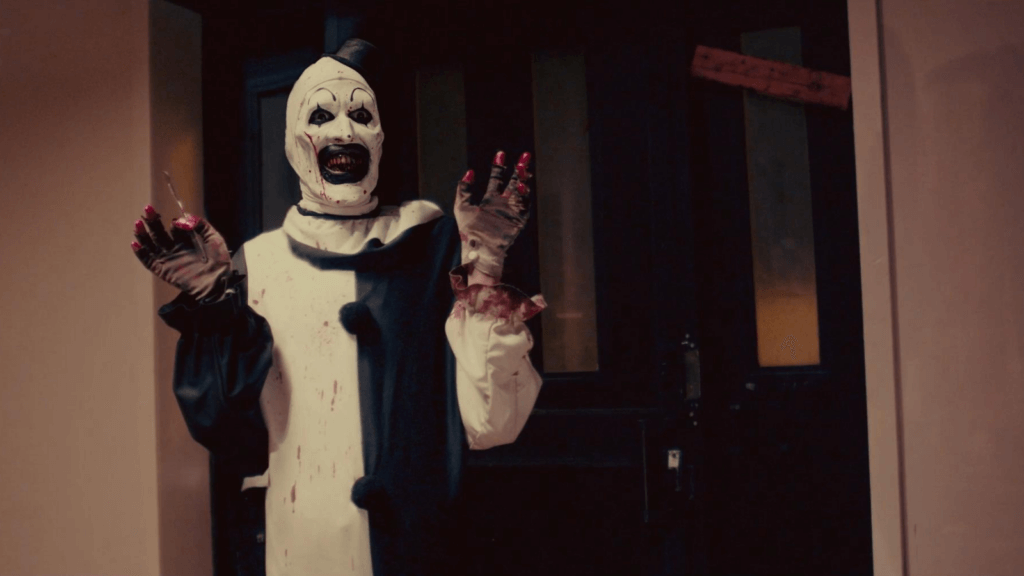
Art the Clown first appeared in the director’s 2008 short film The 9th Circle, where the character—played by Mike Giannelli and looking quite plain compared to the later version with sharper features—abducts a woman for his master: a cheap-looking Satan who resembles Tim Curry’s evil character from Legend (1985). Those devilish origins gave way to the more characteristic antics in Terrifier, a 20-minute short from 2011 that finds Art tormenting a witness to one of his murders on Halloween night, using devices (sheets of plastic, horns, a chain-whip armed with sharp tools, etc.) that would appear in the feature-length version. Art also had a significant role in the horror anthology All Hallow’s Eve (2013), featuring a trio of stories, all written and directed by Leone. Here, Art repeats some of his behavior from the director’s short films. Eventually, due to the success of this direct-to-DVD release, Leone launched a crowdfunding campaign to finance a feature based on his 2011 short film, with Art recast from Giannelli to David Howard Thornton.
There’s not much to the story in Terrifier. Despite the 85-minute runtime, much of Terrifier feels like aimless filler, with characters wandering around looking for their friends: “Hello? Where are you guys? This isn’t funny.” Jenna Kanell and Catherine Corcoran play the thinly drawn Tara and Dawn, best friends who stagger home from a Halloween party and decide to sober up at a greasy pizza joint. While there, Art the Clown shows up and focuses his attention on Tara, who’s instantly unnerved by his presence. He continues to haunt their evening, leaving several bodies in his wake. After vandalizing the pizza place’s restroom with scat paint, he turns the manager’s head into a jack-o-lantern. Due to lame circumstances, Tara finds herself fighting for her life in a rundown building with confusing spatial geography, and several others, including an exterminator and a disturbed woman, fall victim to Art’s insatiable appetite for gore. Victoria (Samantha Scaffidi), Tara’s sister, arrives to help. Almost no one survives. Otherwise, nothing much occurs in the movie, aside from one sequence after another of Art mutilating his victims and getting a kick out of it. None of the characters have more than a single mode, yet the acting is capable.
Still, there’s something admirable in Leone’s singularly go-for-broke approach, even if he sidesteps rich characters—he has since expressed regret about not spending more time on his characterizations. From the opening scene, where a media pundit (Katie Maguire) interviews a mangled survivor of Art’s massacre, insults her appearance, and ends up mangled herself, it’s evident that Leone wants to push boundaries in terms of gory visuals. Along with his producing partner Phil Falcone, Leone made Terrifier’s elaborate, disgusting, but altogether amazingly conceived practical effects look realistic and tangible—far removed from the CGI-heavy bloodletting in most of today’s horror movies. And the cinematography by George Steuber, complete with heightened colors and high-contrast lighting, leaves the whole experience looking like a bad dream. Like so many horror directors today, Leone grew up watching 1980s horror, where every other filmmaker tried to out-gross each other with each new film, with wizards like Rick Baker and Rob Bottin testing the limits of special effects. Leone’s nasty kills—in particular, one scene where Art splits a woman hung upside-down with a hacksaw, starting at her vagina and working his way down to her head, resulting in one of the most shocking moments in horror cinema history—prompted several think pieces and online rants against the director’s perceived misogyny.
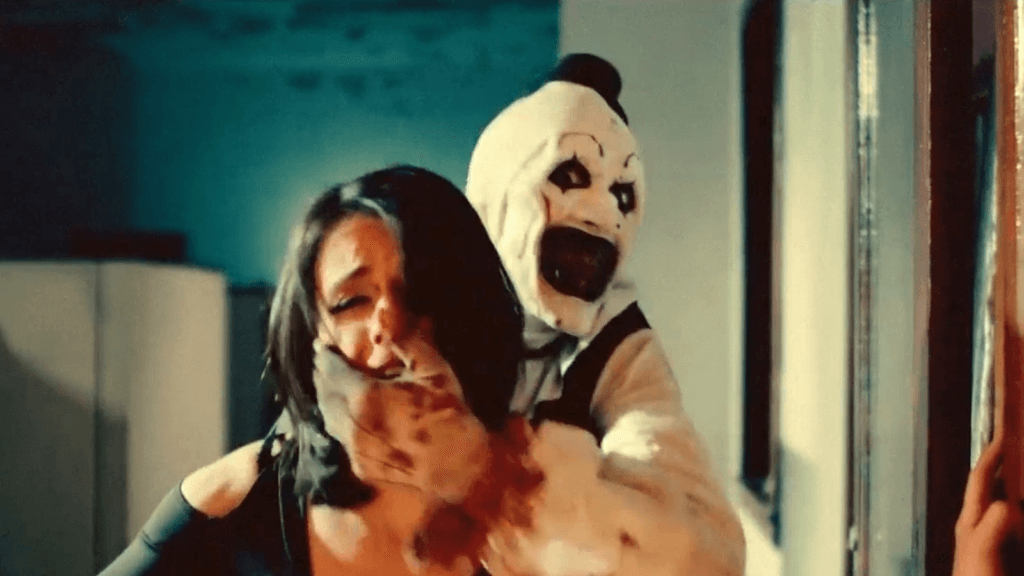
One could argue that, because more men die than women (5 to 3, by my count), the ratio of female victims to males in Terrifier suggests Leone isn’t some deviant using his movie to perpetuate violent imagery against women. Then again, one could argue that the choice to have this woman completely naked and for the assault to start at her vagina is inherently misogynistic. No men were disposed of with a specific attack on their reproductive organs while they where completely stripped. Despite the numbers, more screen time is also given to the killing and mutilation of women. It could be rationalized that Leone embraces a venerable motif in exploitative slasher movies of this ilk, which finds women targeted, usually by warped men acting out some manner of repressed sexual desire that manifests as violence. After all, Tara rejects Art’s proposal with the ring in the pizza parlor, and Dawn flirts with him and takes selfies. This could strengthen the argument that male sexual repression leads to violence against women. Indeed, some believe that such films encourage violence against women, and that debate remains ongoing. But perhaps this movie is instead acknowledging and giving space to the many fears women face when confronted by dangerous, sexually frustrated men. Still, that hacksaw scene alone is enough to give one pause and consider what, if anything, Leone hopes to achieve beyond conceiving the most awful thing imaginable. But if that were the case, I’m not sure that anything’s necessarily wrong with that.
Many horror filmmakers want to push boundaries of good taste and representation, if only to test their limits and those of moviegoers—particularly genre enthusiasts who love to see how far a filmmaker will go. It’s not the most intellectual of pursuits, but it’s a factor in a strain of horror movies that delights in the demented. Any sociological implications seem beside the point, if not entirely unconsidered. Not surprisingly, the movie’s morally upright reactionaries who accuse Leone of something untoward miss the point of a gorefest, which is precisely designed to provoke, exploit, and show audiences something they’ve never seen—all while using genre conventions as a launchpad to build upon. Its characters may prove thin and practically nonexistent, but the 84-minute movie manages to give an unforgettable dose of extreme horror. It’s repulsive, shocking, and disturbingly funny, even a little nihilistic in its single-minded ambitions. Terrifier doesn’t give the viewer much to chew on, but even the most desensitized horror fanatic will watch in horrible awe at what Leone has created.
(Note: This review was originally suggested and posted to Patreon on October 2, 2024.)
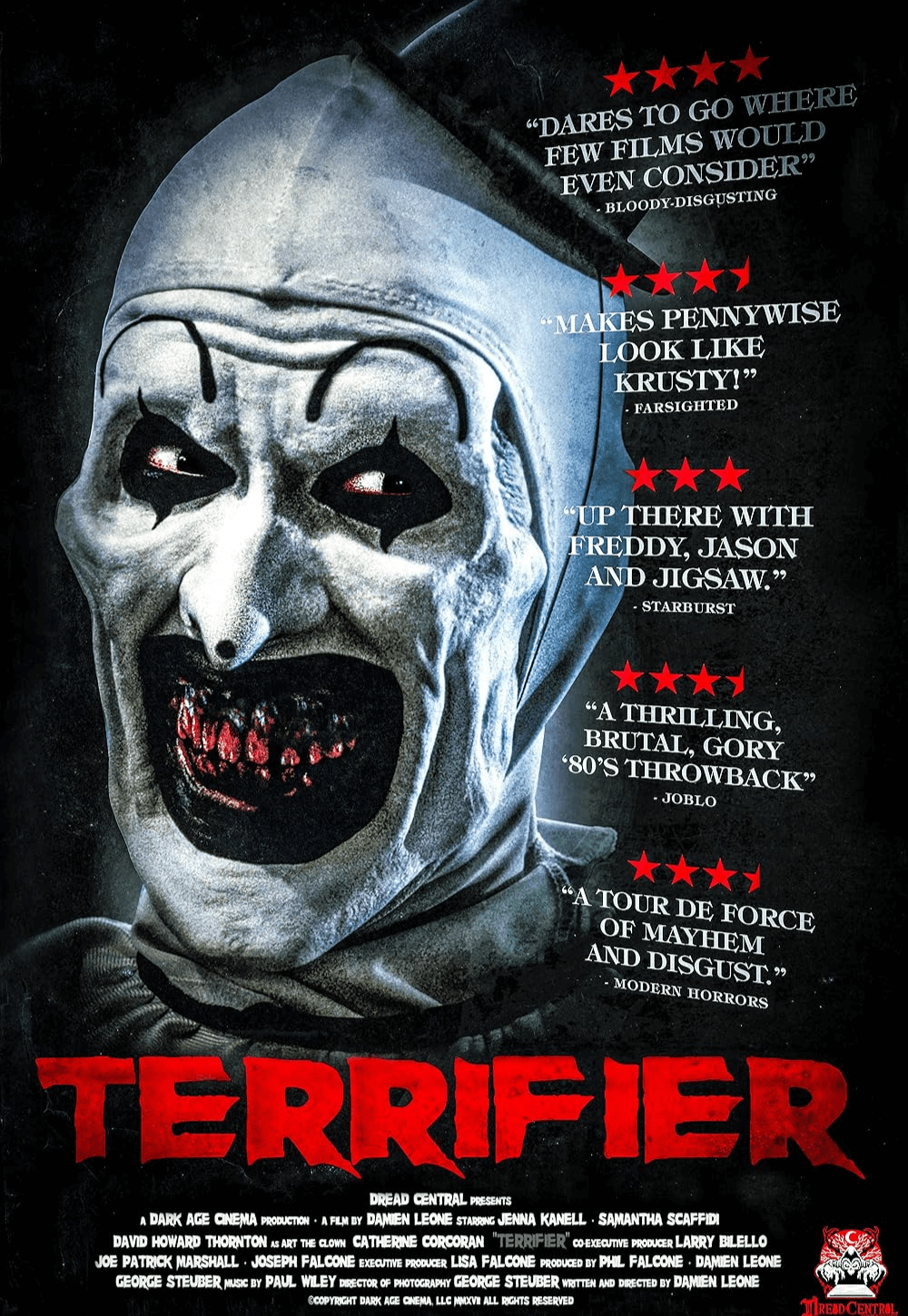
Thank You for Supporting Independent Film Criticism
If the work on DFR has added something meaningful to your love of movies, please consider supporting it.
Here are a few ways to show your support: make a one-time donation, join DFR’s Patreon for access to exclusive writing, or show your support in other ways.
Your contribution helps keep this site running independently. However you choose to support the site, please know that it’s appreciated.
Thank you for reading, and for making this work possible.
Brian Eggert | Critic, Founder
Deep Focus Review


